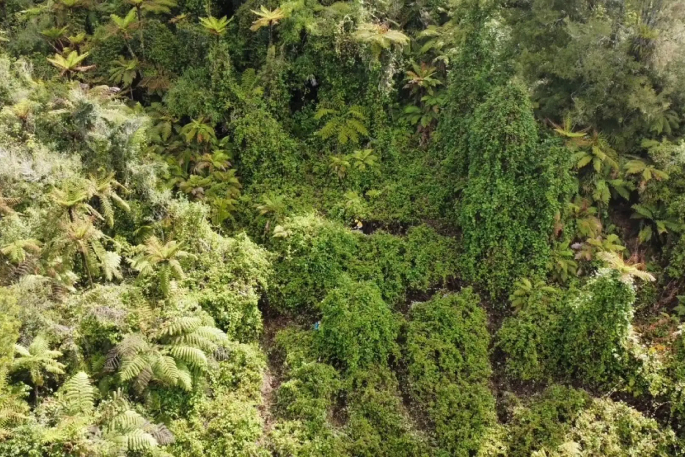Local growers and residents are advised routine aerial surveillance looking to locate wild kiwifruit vines will be taking place in Te Puke in June.
Kiwifruit Vine Health chief executive Leanne Stewart says early winter, when leaves turn yellow, is the best time to detect wild kiwifruit vines from the air.
“When a fine weather window presents itself in early June KVH is planning to undertake aerial surveillance of the Te Puke gullies from No 4 Road to Maungarangi Road," says Leanne.
“The last time a similar survey was undertaken was three years ago and this is a prime opportunity to collect information about what successes and changes we can see as a result of our long-term management of wild vines.”
Information from the flight will be collated for analysis as part of the kiwifruit industry’s ongoing surveillance research project aimed at identifying wild kiwifruit vines through satellite imagery, adds Leanne.
“The data will also be of huge help to KVH’s contractors and aid in them quickly finding infestations and programme them for control.”
KVH – the kiwifruit industry’s dedicated biosecurity organisation - works collaboratively with industry organisations, regional councils and landowners to manage wild kiwifruit populations to reduce biosecurity risk.
The reason wild kiwifruit vines are a biosecurity risk to New Zealand’s kiwifruit industry is that they act as a vector for Psa and other kiwifruit pests and diseases.
The wild population can act as a reservoir for pests and diseases, undermining eradication, and control efforts on commercially productive vines.
They are also a threat to our environment. Wild kiwifruit vines are vigorous climbers, and if left uncontrolled, it can form dense heavy blankets of vines that strangle trees, causing them to die or collapse.
Vines can also smother forestry plantations and New Zealand’s native bush.
If you know the location of any unrecorded wild kiwifruit infestations, contact your local regional council or unitary authority with details so the infestation can be assessed and programmed for control, or visit www.kvh.org.nz for more information.



0 comments
Leave a Comment
You must be logged in to make a comment.